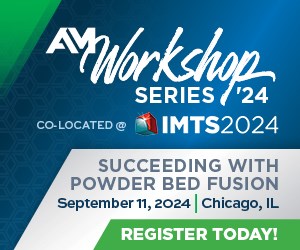Plasmatreat Openair-Plasma Offers Safe Surface Cleaning, Activation
The atmospheric plasma solutions include high-efficiency plasma cleaning, activation and nanocoating of surfaces.
Even large components, such as an automotive dashboard, can emerge from the 3D printer and then be bonded, painted or printed — all possible through pretreatment with Openair-Plasma. Photo Credit: Plasmatreat
Plasmatreat’s Openair-Plasma processes are designed to optimize additive manufacturing (AM) by significantly improving the quality of components while also reducing the manufacturing company’s carbon footprint. The company says atmospheric pressure plasma pretreatment is one of the most efficient plasma processes for cleaning, activating or coating plastics, metals, glass, recycled materials and composite materials.
Activating the surface with Openair-Plasma enables environmentally friendly printing and painting without resorting to conventional flame treatment or chemical pretreatment. In comparison to low pressure plasma technology, no special chamber system is required when Openair-Plasma technology is used. During ultrafine cleaning with Openair-Plasma (plasma cleaning), surfaces are gently and safely cleaned of release agents and additives, and sterilized (plasma sterilization), while plasma activation makes later adhesion of glues and coatings possible. By using the nanocoating PlasmaPlus (plasma coating), functionalized surface characteristics can also be produced that meet special product requirements.
The Openair-Plasma process is a simple, safe and environmentally-friendly technology — only air, electrical power and the existing production line are required for plasma treatment under normal pressure. As a result, Openair-Plasma can be used in almost all areas of industrial manufacturing.
The long-term durability of inks and coatings can also be further increased by a supplementary PlasmaPlus coating. When bonding products from the 3D printer, the use of plasma technology also replaces the use of chemical adhesion promoters (primers) and achieves long-term stable bonds — even when originally incompatible materials are used. Users thus benefit from an expanded choice of materials.
The process is known for reliability and cost-effectiveness. High process speed and lower scrap rates provide high process efficiency. Because it enables flexible material selection, the Openair process also facilitates the use of more advantageous materials.
It also offers a high degree of activation. Unlike corona treatment, Openair-Plasma permits a high degree of activation of the surfaces to be treated. Additionally, it provides a arge process window as the danger of thermal component damage is extremely low in comparison to flaming.
The process is alo easy to integrate. In contrast to mechanical processes, like roughening and sand or aluminum oxide blasting, Openair-Plasma can easily be integrated inline in existing processes.
The process is also environmentally friendly as it makes it possible to treat surfaces with solvent-free and VOC-free methods. Unlike electrochemical processes, such as galvanizing or galvanically-supported pickling and chrome plating, wet chemistry is not required.
“3D printing alone is not enough. A strong network of manufacturers and companies that master the upstream and downstream processes is key to the breakthrough of this revolutionary technology in the industry,” says Frank Petrolli, Plasmatreat vice president of strategic market development. “Plasmatreat is taking a step ahead here and shows that solutions can be implemented quickly and sustainably.”
- Learn how plasma technology produces metal powders that are more spherical and provide better properties for additive manufacturing.
- Check out a variety of evolving postprocessing systems in our #Postprocessing section.
Related Content
Copper, New Metal Printing Processes, Upgrades Based on Software and More from Formnext 2023: AM Radio #46
Formnext 2023 showed that additive manufacturing may be maturing, but it is certainly not stagnant. In this episode, we dive into observations around technology enhancements, new processes and materials, robots, sustainability and more trends from the show.
Read MoreAM 101: What Is Hot Isostatic Pressing (HIP)? (Includes Video)
Hot isostatic pressing has long been used for metal castings, but is now being applied as a valuable method for closing porosity in metal 3D printed parts.
Read MoreTop 10 Additive Manufacturing Stories of 2023
Laser powder bed fusion, proprietary AM processes, machining and more made our list of top 10 articles and videos by pageviews this year.
Read More8 Cool Parts From Formnext 2023: The Cool Parts Show #65
New additive manufacturing technologies on display at Formnext were in many cases producing notable end-use components. Here are some of the coolest parts we found at this year’s show.
Read MoreRead Next
3D Printing Brings Sustainability, Accessibility to Glass Manufacturing
Australian startup Maple Glass Printing has developed a process for extruding glass into artwork, lab implements and architectural elements. Along the way, the company has also found more efficient ways of recycling this material.
Read MoreGE Additive Rebrands as Colibrium Additive
As part of the brand name transition, both the Concept Laser and Arcam EBM legacy brands will be retired.
Read MoreTo Improve Performance of Compression Molded Composites, Add 3D Printed Preforms
9T Labs' Additive Fusion Technology enables the manufacture of composite structures with as much or as little reinforcement as is necessary, using 3D printed continuous fiber preforms to add strength just where needed.
Read More










.png;maxWidth=300;quality=90)













